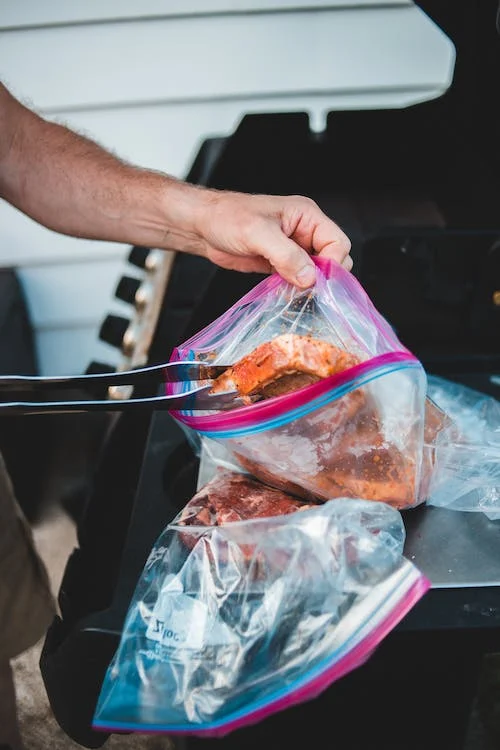Frozen meat is any meat stored below zero degrees Fahrenheit (-18° C) to preserve its useful timetable longer. Meat freezing is a common method used by individuals, food manufacturers, and restaurants, even in ancient times to keep meat before consumption. All frozen meat and meat products are packaged before placement on retail displays.
The main reason for packaging meat during frozen display is to minimize moisture loss. Moisture loss causes harmful effects on the texture, flavor, and color of the meat and may even pose a health danger to anyone who eats frozen meat. As practical as it is, remember that as a consumer, it is a must to know how long you should keep frozen meat products and what to do to ensure their safety for eating. Lucky for you, this article will help you gain helpful insights on this matter.
Importance of Freezing Meat
Foods that are permanently stored at 0°F are always safe. More extended storage in the freezer degrades quality but not its consumption ability. Freezing a meat product keeps food safe by slowing down the movement of molecules and putting microbes into a dormant phase. Freezing preserves food for a long time to prevent the growth of microorganisms that cause food spoilage and food poisoning.
Food that requires refrigeration should be placed in the refrigerator as soon as you bring it home. Food experts have been promoting the “two-hour rule,” which means do not leave meat, poultry, seafood, eggs, or any product or other food that requires refrigeration at room temperature for more than 2 hours (1 hour if the temperature exceeds 30°C). Also, do not place the refrigerator or freezer so tightly that air cannot circulate when storing food.
Many foods other than meat, vegetables, and dairy require refrigeration. If you neglect to refrigerate something correctly, it’s usually best to throw it away. When it comes to frozen meat, one of the primary benefits is its convenience. It can be purchased in bulk and stored for a long, so it is also recommended for busy households. Frozen meat is often cheaper than fresh meat, making it an economical choice for many individuals and families.
However, packaged meat should be placed in the freezer immediately after packaging for rapid freezing. Unless the meat is rapidly frozen to stop its metabolic activity, muscle metabolism can quickly darken the color to a dark red or brown. Freezing at 0°F inactivates all microorganisms (bacteria, yeast, mold) in food. However, once thawed, these microbes become active again and, under the right conditions, can grow to levels that lead to food poisoning.
The condition of frozen food depends on the meat’s quality at the time of freezing. Thawed food tastes better when frozen at the highest rate than frozen food at the end of its useful life. So freeze items you don’t need immediately. Store all foods below 0°F to preserve vitamin content, color, flavor, and texture.
Shelf Life of Frozen Meat
The shelf life of frozen meat depends on the quality of the meat and how it is stored. Frozen meat is generally safe in the freezer for 6 to 12 months. However, it’s important to note that this is a guideline, and there is no shortcut. Factors that affect frozen meat’s shelf life include the meat’s quality before freezing, the temperature and humidity of the freezer, and the packaging in which the meat is stored.
One crucial consideration in freezing meat is its quality before the freezing time. It is best to secure that you have chosen packaged at its prime by checking its color, texture, and smell. Remember, the freezing process itself does not destroy nutrients. The nutritional value of meat and poultry products changes little during deep freeze storage.
If the purchased meat was already of compromised quality, enzyme activity is possible. Enzyme activity can reduce food quality. It may even lead to the food quality’s deterioration as it promotes chemical reactions, which can be harmful to anyone who consumes the product. So, your utmost concern is securing the best quality meat before you start your stocking process. One way to ensure this is to purchase meat from a trusted brand or reseller. Another is to look for the meat’s inspection mark. The certification mark on the packaging indicates that the product was manufactured in a USDA or federal laboratory under controlled conditions. Follow package directions for thawing, reheating, and storage.
Another concern in connection to the longevity of frozen meat is the service your freezer provides. Keep refrigerator temperature below four °C (40°F). The freezing temperature should be 0°F (-18°C). Use for short-term food storage if your refrigerator freezer cannot hold zero degrees or if the door is opened frequently. A home thermometer is generally inexpensive and is the best way to find out these temperatures.
Lastly, one of your concerns must also be directed to the frozen meat’s packaging. Proper packaging helps preserve quality and prevent freezer burn. Meat and poultry can be safely frozen in their original packaging, but this packaging is permeable to air and can deteriorate over time. Overwrap these packages for extended storage as you would any food for long-term storage. Meat and poultry do not need to be rinsed. Freeze unopened vacuum packs. If the package is accidentally ripped or opened while the food is in the freezer, the food is safe to use. Just wrap or repackage.
It is best to check with USDA’s Freezer Storage Chart to have a better view of the longevity of frozen meat.
Conclusion
There are many factors to remember and consider when handling frozen meat carefully to ensure food safety. With the longevity of meat consumption, stocking frozen meat is one of the most convenient ways to ensure you have food to serve any time of the day. However, precautions and reminders must always be addressed as this may compromise everyone’s health.





